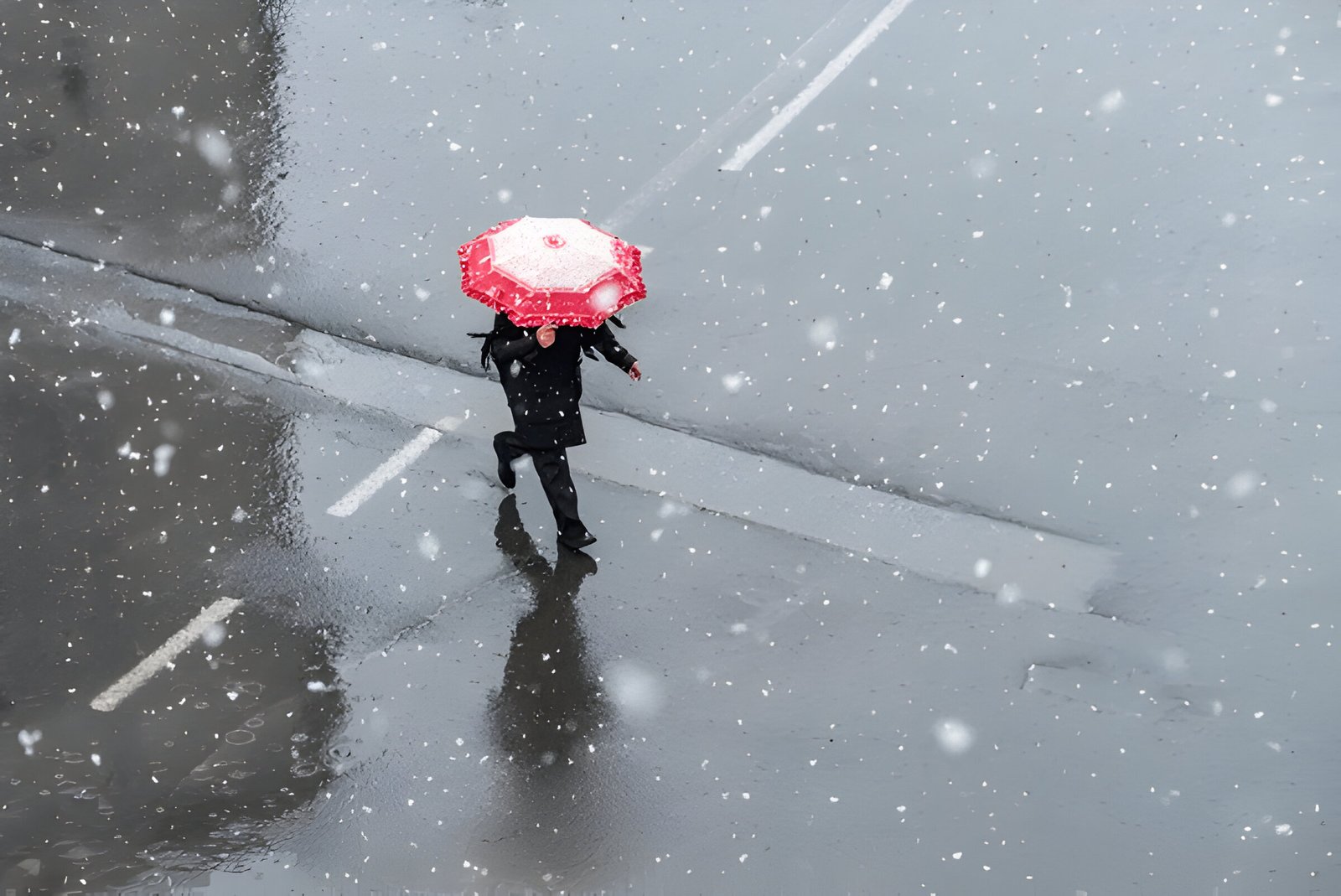Image Credit: ShutterStock
Winter is coming with full force to Southern Ontario this week as meteorologists warn of heavy snow and freezing rain. The cold front moving in from the northwest is expected to bring significant winter weather, leading to hazardous conditions across the region. Residents are urged to prepare for snow accumulations, icy roads, potential power outages, and dangerous travel conditions.
What to Expect: Heavy Snow and Freezing Rain
According to weather reports, a powerful low-pressure system is moving into Southern Ontario, bringing a mix of heavy snow and freezing rain. This storm is expected to last for several days, causing disruptions in daily life. Here’s a breakdown of what to expect:
- Heavy Snowfall:
Some areas could see as much as 15 to 25 cm (6 to 10 inches) of snow, particularly in the northern and higher-elevation regions of Southern Ontario. Accumulations will begin mid-week, and the heaviest snow is expected from Wednesday through Friday. - Freezing Rain:
Freezing rain is forecasted for lower-lying areas, especially near Lake Ontario and the Niagara region. Ice buildup on roads, power lines, and trees will likely result in dangerous conditions, with a possibility of power outages due to ice accumulation.
Impact on Roads and Travel
The combination of heavy snow and freezing rain will make road conditions treacherous. Drivers should be cautious and avoid unnecessary travel, especially during peak storm periods. Key points to consider include:
- Reduced Visibility:
Blowing snow, particularly in open areas, will reduce visibility, making driving hazardous. - Icy Roads:
Freezing rain will create slippery roads, leading to an increased risk of accidents. Commuters should allow extra time for travel or reconsider their plans during the worst of the storm. - Public Transportation Disruptions:
Delays or cancellations in public transportation services, such as buses and trains, are expected due to hazardous weather conditions. Always check schedules and be prepared for disruptions.
Power Outages and Ice Accumulation
Freezing rain is a significant concern as it can cause ice to accumulate on power lines, trees, and other structures. The added weight can result in broken branches and downed power lines, potentially leading to widespread power outages. Residents should prepare for the possibility of being without electricity by stocking up on essentials such as:
- Food and Water:
Non-perishable food and bottled water should be available in case of prolonged power outages. - Flashlights and Batteries:
Ensure you have working flashlights, batteries, and a battery-powered radio to stay informed during outages. - Backup Heating:
If possible, have a backup heating source, such as a wood stove or generator, especially if temperatures drop significantly.
School Closures and Work Disruptions
Schools and businesses across Southern Ontario may face closures or disruptions during this winter storm. Parents and employees should monitor local news and weather reports for updates. With remote work and learning becoming more common, ensure that all necessary digital tools are charged and ready for use.
Winter Storm Preparedness Tips
Here are some practical steps to ensure safety during the storm:
- Prepare an Emergency Kit:
Include food, water, medications, blankets, flashlights, batteries, and a first-aid kit. Make sure your kit is stocked and accessible. - Check Your Heating System:
Make sure your home heating system is working correctly. Have extra blankets and warm clothing on hand in case of power outages. - Clear Gutters and Drains:
Prevent ice buildup on your roof by ensuring gutters and drains are clear of debris. - Stay Informed:
Keep an eye on weather updates and road conditions through local news channels or a weather app.
Stay Safe: Avoid Unnecessary Travel
Local authorities are advising residents to avoid travel unless absolutely necessary during this storm. If you must be on the road, follow these guidelines:
- Equip Your Vehicle:
Ensure that your car is equipped with winter tires, a scraper, de-icer, and an emergency kit. - Drive Slowly:
Reduce your speed and maintain a greater distance from the vehicle ahead of you. - Check Road Conditions:
Before heading out, check road reports and closures via local transportation websites.
Potential Aftermath: What to Expect After the Storm
Once the storm passes, it may take a few days for the situation to return to normal. Plowing and salting operations will be in full effect, but road conditions may remain hazardous due to leftover ice and snow. Power companies will work to restore electricity, but the time frame for full recovery could vary depending on the severity of the ice storm and the extent of power outages.
Conclusion:
The heavy snow and freezing rain expected in Southern Ontario this week will likely lead to dangerous conditions for residents and travelers alike. It’s essential to prepare now by stocking up on necessities, securing your home, and planning for potential disruptions. Remember to stay informed by monitoring weather updates and road conditions regularly. With proper planning and caution, you can weather the storm safely.
FAQ’s
- When is the heavy snow expected to start in Southern Ontario?
Snow is expected to begin mid-week, with the heaviest snowfall occurring from Wednesday through Friday. - How much snow is expected?
Some areas may see between 15 to 25 cm (6 to 10 inches) of snow. - What areas will experience freezing rain?
Lower-lying areas, particularly near Lake Ontario and the Niagara region, are most likely to experience freezing rain. - What are the risks associated with freezing rain?
Freezing rain can cause slippery roads, ice accumulation on trees and power lines, and potential power outages. - Will there be power outages?
Yes, freezing rain may lead to ice buildup on power lines, resulting in potential power outages. - Should I avoid travel during the storm?
Yes, unnecessary travel is discouraged due to dangerous road conditions. - What should I include in an emergency kit?
Include food, water, blankets, flashlights, batteries, and essential medications. - Will schools and businesses close?
School closures and business disruptions are likely; monitor local updates for information. - How can I prepare my home for the storm?
Clear gutters, check your heating system, and have an emergency kit ready. - What should I do if I lose power?
Stay warm with blankets, use backup heating sources, and report outages to your local power company.



























Your article helped me a lot, is there any more related content? Thanks!